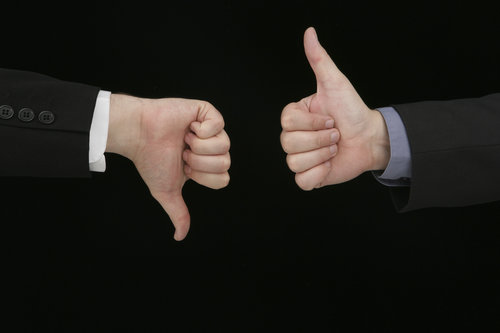Sure, unemployment has been falling, but the way we measure unemployment is riddled with problems
Last week, we reported that the U.S. unemployment rate fell to 5.5 percent in February, the lowest it’s been in nearly seven years.
News agencies and politicians alike rejoiced in the news, and we agree that a lower unemployment rating is certainly better than a higher one.
However, there’s also an extremely uncomfortable truth behind that 5.5-percent stat, one that few people know about – the official unemployment rate is quite misleading, and offers little insight into the actual state of the nation’s economy.
How could we make such a bold statement? Here are four things to consider:
1. A “Discouraging” Stat – Firstly, the most gaping whole in the unemployment rate comes in the form of “discouraged workers,” economic-speak for people who are so fed up with their failed job search that they throw in the towel and stop looking. Although such people are still obviously unemployed, they are not counted in the official unemployment rate, which only considers individuals who are actively looking for work.
2. Under-Reporting the Underemployed – Furthermore, the unemployment rate does not consider “severely underemployed” workers, aka people who are currently stuck in part-time work but desperately want/need full-time work. So someone, for instance, could have a college degree and be more than capable of handling a full-time job, but that person is instead stuck working part-time at Wal-Mart for 20 hours a week; though their employment situation is hardly ideal, they are still counted as employed by the U.S. Department of Labor.
According to Gallup, between discouraged workers and the underemployed, the unemployment rate is excluding some-30 million people from its economic models.
3. Odd-Job Employed – As if that weren’t enough, the unemployment rate also discounts people performing odd jobs and other minimal tasks. As long as someone works a minimum of one hour a week and is paid at least $20 – so if our college graduate from the last point helps a neighbor with their yard work – they are not counted among the official unemployed.
4. Not Just Jobs, but Quality Jobs – Finally, we come to the real rub of the unemployment rate, that being the actual quality of the jobs available. Even if the unemployment rate is falling, that does not mean that the newly employed are working in good-paying jobs, a fact that the earlier points certainly drive home.
A contrasting vision comes courtesy of Gallup, which produces a competing measure of the nation’s labor markets that follows an infinitely more straightforward measurement: someone working 30-plus hours and receiving a regular paycheck is counted as employed.
Unfortunately, Gallup’s latest measurement contains none of the optimism in the Labor Department’s report. According to Gallup, just 43.8 percent of the adult population (aged 18 years and older) is currently employed under those standards, with 15.9 percent underemployed and 6.6 percent unemployed.
For America’s middle class to return – and for them, therefore, to resume buying homes – Gallup estimates that its employment rating must be 50 percent, and 10 million good, competitively waged jobs must enter the economy. And by that measure, we still have a ways to go.

